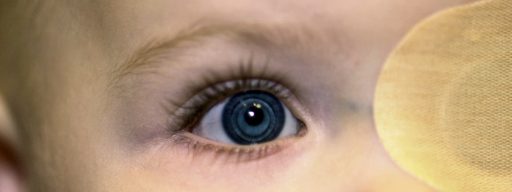Vision is a precious gift allowing a person to learn and explore the world by perceiving and analysing visual information. It’s important to pay attention to eye health from childhood. Contacting a specialist and seeking professional advice is of utmost importance. One condition in which it is virtually impossible to postpone visiting an eye care specialist is congenital lens subluxation, which is diagnosed when the lens is displaced from its normal central position.
Lens subluxation is of two types: acquired, which is usually the result of eye or head trauma, and congenital. Congenital lens subluxation is in many cases associated with general health conditions such as connective tissue disorders. The subluxated lens lacks good support from its ligament or so-called zonular fibres (Zinn’s zonules).
- Marfan syndrome In children, this inherited disease can cause deviations in various organs, with a characteristic triad most frequently observed by the ophthalmologist as well as the general physician. These are gigantism (tall height), arachnodactyly (long fingers), and lens ectopia. In Marfan syndrome, over 50 percent of patients experience vision problems.
- Weill-Marchezani, Rieger, and Ehlers-Danlos syndromes, as well as homocystinuria, are serious hereditary diseases associated with lens subluxation along with a number of other health problems.

You can make an appointment by phone from 8:30 to 19:30 (daily).
Most often, children complain of decreased vision. Other symptoms may be present, however, such as:
- Irido- and phacodonesis, trembling of the iris and the lens during eye movement.
- Eye anterior chamber that is uneven in depth.
- Pupil that is too narrow (miosis) or too wide (mydriasis).
- Double vision (diplopia).
In children with Marfan syndrome or other hereditary diseases leading to lens subluxation, a specific diagnostic process using the appropriate equipment is used:
- General health check.
- Eye biomicroscopy.
- Funduscopy.
- Ultrasonic eye evaluation.
In some cases, with a complicated disease course, such as a complete dislocation of the lens into the anterior chamber or vitreous cavity or glaucoma, a surgical procedure may be recommended. Surgery involves removal of the lens (phacoaspiration) with or without implantation of an intraocular lens.
In cases when mild subluxation does not affect visual acuity, surgery may not be indicated. The choice of using spectacles or contact lenses for optimal vision correction is made with the help of the ophthalmologist.



